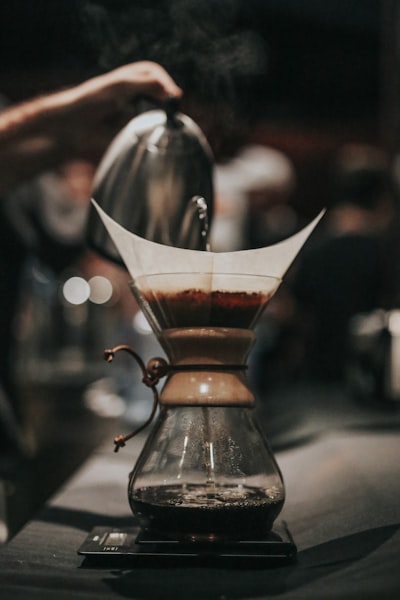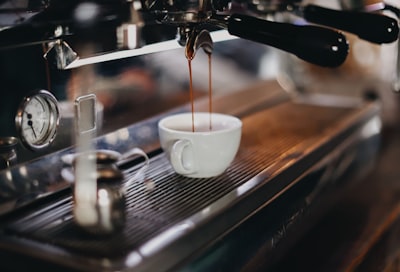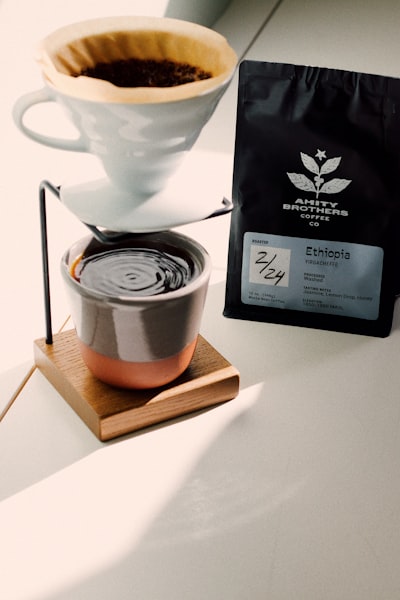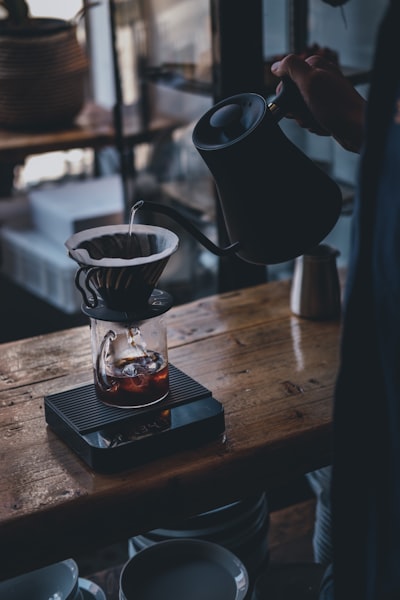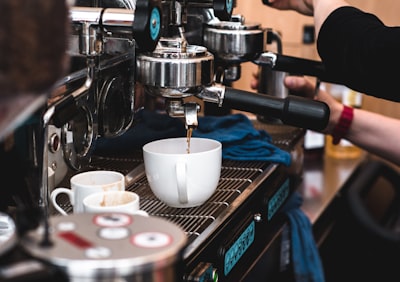Imagine waking up to the perfect cup of coffee every day, brewed with an artistry that matches your taste buds’ every whim. Well, that perfect cup is more within reach than you think. The key lies not just in the type of coffee you choose, but in how you brew it.
Join us as we delve into a unique comparison of coffee brewing methods, exploring the magic that transforms simple beans into your favorite morning elixir. From the velvety richness of French Press to the intense flavor of Espresso and the cool simplicity of Cold Brew, you’re about to embark on an exciting coffee journey. Ready to dive in? Let’s begin.
1. French Press: Embracing Simplicity
The French Press, also known as a press pot or plunger pot, has been a long-time favorite brewing method for coffee enthusiasts worldwide. Renowned for its simplicity and ability to produce a robust, full-bodied cup of coffee, the French Press method truly allows your coffee grounds to sing.
How Does It Work?
- Step One: Start by grinding your coffee beans to a coarse consistency. Add these ground beans to your French Press.
- Step Two: Pour hot water (just off the boil) over the beans, give it a gentle stir, then let the mixture steep for about four minutes.
- Step Three: Slowly press the plunger down, pushing the coffee grounds to the bottom and leaving your delicious brew on top.
What Does It Taste Like?
French Press coffee is known for its robust and rich flavor. Thanks to the steeping process, your brew will contain more of the natural oils and sediments from the beans. This adds complexity and body to the final cup, providing a sensory experience that’s hard to replicate with other brewing methods.
What Equipment Do I Need?
You’ll need a French Press, a good grinder, and your favorite coffee beans. If you’re searching for the perfect beans for your French Press, we recommend taking a look at our detailed guide: What type of coffee is best for French Press.
2. Espresso: An Italian Classic
The Espresso forms the heart of many popular coffee drinks like lattes, cappuccinos, and americanos. Hailing from Italy, this method requires precision and consistency, but it rewards coffee lovers with a powerful and flavorful cup.
How Does It Work?
- Step One: Start by grinding your coffee to a fine consistency, almost as fine as powdered sugar.
- Step Two: Pack this finely ground coffee into a ‘portafilter’.
- Step Three: Using an espresso machine, force hot water through the coffee grounds under high pressure. The result is a small, concentrated shot of coffee.
What Does It Taste Like?
Espresso is bold and intense. It offers a thicker consistency compared to other brews, filled with the coffee’s oils, creating a ‘crema’ on the top – a sure sign of a well-brewed espresso.
What Equipment Do I Need?
To brew espresso, you’ll need an espresso machine, a fine grinder, and dark roasted beans. A popular espresso machine available on Amazon is the Breville Barista Express, renowned for its quality and ease-of-use.
3. Drip or Filter Coffee: The Everyday Favorite
The automatic drip machine method is probably the one you’re most familiar with. This method is straightforward, consistent, and convenient, making it the most common method in many households and offices.
How Does It Work?
- Step One: Insert a filter into the machine’s basket. Fill it with medium-ground coffee.
- Step Two: Fill the water tank with cold water.
- Step Three: The machine heats the water and pours it over the coffee grounds, which then drips into a carafe.
What Does It Taste Like?
Drip coffee has a lighter body compared to espresso or French Press. Its flavor profile is straightforward and clean, allowing you to enjoy the essence of the coffee without any overwhelming complexity.
What Equipment Do I Need?
For this method, you need an automatic drip machine and medium-ground coffee. We recommend Technivorm Moccamaster, a favorite among users for its consistency and simplicity.
4. Pour Over: A Manual Masterpiece
The Pour Over method is a manual method that requires a little patience but offers more control over the brewing process. This hands-on approach allows you to fine-tune your coffee to perfection.
How Does It Work?
- Step One: Place a filter in your Pour Over device. Add medium-fine ground coffee to the filter.
- Step Two: Gradually pour hot water over the coffee in circular motions, allowing the water to pass through the coffee and filter and drip into your cup or carafe.
What Does It Taste Like?
Pour Over coffee typically has a clean taste, with a bright and complex flavor. The slow brewing process extracts a range of flavors from the coffee, resulting in a more nuanced cup compared to drip coffee.
What Equipment Do I Need?
You’ll need a Pour Over device, a gooseneck kettle for precision pouring, and medium-fine ground coffee. The Hario V60 is a popular choice among coffee aficionados for its design and durability.
5. Cold Brew: A Refreshing Alternative
Ideal for hot summer days, or if you have a sensitive stomach, the Cold Brew method produces a smooth, low-acid brew that’s incredibly refreshing.
How Does It Work?
- Step One: Coarse coffee grounds are mixed with cold water.
- Step Two: This mixture is left to steep for 12-24 hours, either at room temperature or in the fridge.
- Step Three: The resulting brew is then filtered, leaving behind a coffee concentrate that can be mixed with cold water or milk.
What Does It Taste Like?
Cold Brew coffee has a naturally sweet, smooth taste. It’s less acidic than hot brewed coffee, making it a great option for those who find regular coffee too harsh on their stomachs.
What Equipment Do I Need?
To make Cold Brew, you’ll need a cold brew maker and coarse-ground coffee. One such maker that’s earned rave reviews is the Ninja CP307 Hot and Cold Brewed System.
A simple comparison table:
Summarizing some key aspects of the brewing methods:
Brewing Method |
Brewing Time |
Equipment Needed |
Complexity |
Coffee Strength |
|---|---|---|---|---|
| French Press | 4-5 minutes | French Press, Grinder, Scale | Medium | Full-bodied, rich |
| Espresso | 25-30 seconds | Espresso Machine, Grinder, Tamper | High | Strong, concentrated |
| Drip/Filter | 5-10 minutes | Coffee Maker, Filter, Grinder | Low | Medium, clean taste |
| Pour Over | 2-3 minutes | Pour Over Cone, Filter, Grinder, Scale, Kettle | Medium-High | Light, nuanced |
| Cold Brew | 12-24 hours | Large Jar, Filter, Grinder | Low | Smooth, less acidic |
Note: The above details are approximations and can vary based on factors such as specific equipment used, coffee type, grind size, and personal taste preferences.
Conclusion: Exploring the Diversity of Coffee Brewing
Through our comparison of coffee brewing methods, we’ve journeyed across diverse landscapes of coffee brewing – from the rich simplicity of French Press to the nuanced intensity of Espresso, the dependable Drip method, the manual artistry of Pour Over, and the refreshing charm of Cold Brew.
Each brewing method serves a unique tale of taste and technique, and the beauty of coffee lies in this variety. Whether you’re a newbie exploring the world of coffee, a seasoned barista, or a student pulling an all-nighter, there’s a method that perfectly matches your palette.
So, why wait? Start your exploration today, and remember – each cup of coffee is more than a beverage; it’s an experience. Continue your journey with us, as we delve into which coffee is best for students. As you explore, taste, and indulge, you’ll find that the joy of coffee lies as much in the journey as it is in the cup!


